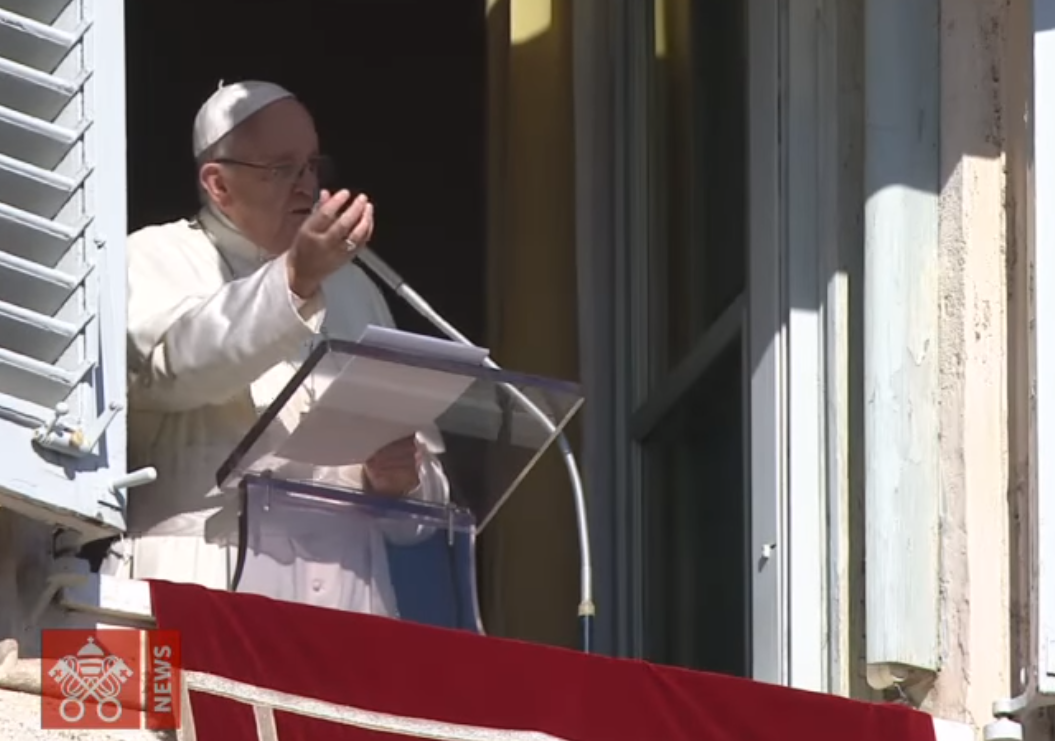Pope Francis on February 4, 2018, spoke of Jesus on road and with the crowd, linking healing and evangelizing.
The Holy Father’s comments came before the Angelus, prayed in St. Peter’s Square with a crowd estimated at 20,000.
The Pope examined the Sunday gospel, Mark’s description of Jesus at Capernaum, and the healing of Peter’s mother-in-law. Mark “highlights the relation between Jesus’ miraculous activity and the awakening of faith in the persons He encounters. In fact, with the signs of healing He carries out for the sick of all sorts, the Lord wishes to arouse faith as response.»
Pope Francis continues by pointing out that Jesus is in the midst of the crowd and the people. He reminds us that “the greater part of Jesus’ public life is spent on the road, amid the people, to preach the Gospel, to heal physical and spiritual wounds. It’s a humanity furrowed by sufferings, this crowd, of which the Gospel speaks many times.
“He doesn’t do laboratory preaching, detached from the people.”
The Holy Father also noted that Christ spent his day with the crowd, late into the evening. But early the next morning, he went out of the city to a quiet place to pray.
“Thus He even subtracts His person and His mission from a triumphalist vision, which misunderstands the meaning of the miracles and of His charismatic power,” Francis explained. “The miracles, in fact, are ‘signs’, which invite a response of faith; signs that are always accompanied by words, which illuminate them and, at the same time, signs and words that cause faith and conversion by the divine strength of Christ’s grace.”
* * *
The Holy Father’s Address Before the Angelus
Dear Brothers and Sisters, good morning!
This Sunday’s Gospel continues the description of a day of Jesus at Capernaum, on a Sabbath, weekly feast of the Jews (Cf. Mark 1:21-39). This time the evangelist Mark highlights the relation between Jesus’ miraculous activity and the awakening of faith in the persons He encounters. In fact, with the signs of healing He carries out for the sick of all sorts, the Lord wishes to arouse faith as response.
Jesus’ day at Capernaum begins with the healing of Peter’s mother-in-law and ends with the scene of the people of the whole town that huddle in front of the house where He was lodging, to bring all the sick to Him. The crowd, marked by physical sufferings and spiritual miseries, constitutes, so to speak, “the vital environment” in which Jesus’ mission is carried out, made up of words and gestures that heal and console. Jesus didn’t come to bring salvation in a laboratory. He doesn’t do laboratory preaching, detached from the people: He is in the midst of the crowd! In the midst of the people! Think that the greater part of Jesus’ public life is spent on the road, amid the people, to preach the Gospel, to heal physical and spiritual wounds. It’s a humanity furrowed by sufferings, this crowd, of which the Gospel speaks many times. It’s a humanity furrowed by sufferings, toil, and trouble: directed to this poor humanity is the powerful, liberating and renewing action of Jesus. So, that Sabbath ends in the late evening in the midst of the crowd. And what does Jesus do afterward?
Before dawn of the following day, He goes out, unseen, by the gate of the city and retires to a place apart to pray. Jesus prays. Thus He even subtracts His person and His mission from a triumphalist vision, which misunderstands the meaning of the miracles and of His charismatic power. The miracles, in fact, are “signs,” which invite to a response of faith; signs that are always accompanied by words, which illuminate them and, at the same time, signs and words that cause faith and conversion by the divine strength of Christ’s grace.
The conclusion of today’s passage (vv. 35-39) indicates that the proclamation of the Kingdom of God by Jesus finds its most proper place on the road. To the disciples seeking Him to take Him back to the city – the disciples went to find Him where He was praying and wanted to take him back to the city –, what does Jesus answer?: “Let us go on to the next towns, that I may preach there also” (v. 38). This was the way of the Son of God and this will be the way of His disciples. The road, as a place of the happy proclamation of the Gospel, puts the Church’s mission under the sign of “going forth,” of the road, under the sign of “movement” and never of a static nature.
May the Virgin Mary help us to be open to the voice of the Holy Spirit, who pushes the Church ever more to pitch her tent amid the people to take to all the healing word of Jesus, doctor of souls and bodies.
[Original text: Italian] [ZENIT’s translation by Virginia M. Forrester]
© Libreria Editrice Vatican

Vatican Media Screenshot
Pope Before the Angelus: Jesus on the Road, with the Crowd
‘Jesus didn’t come to bring salvation in a laboratory.’


